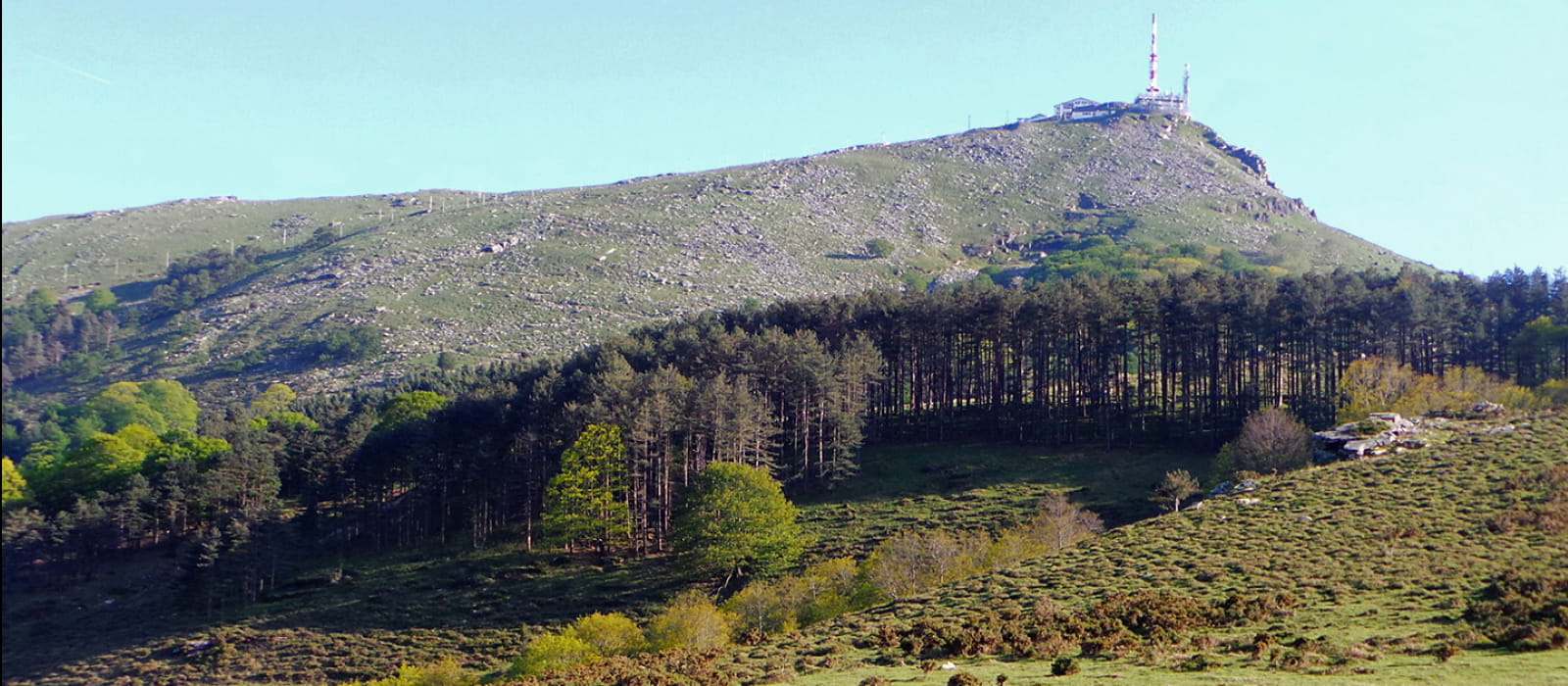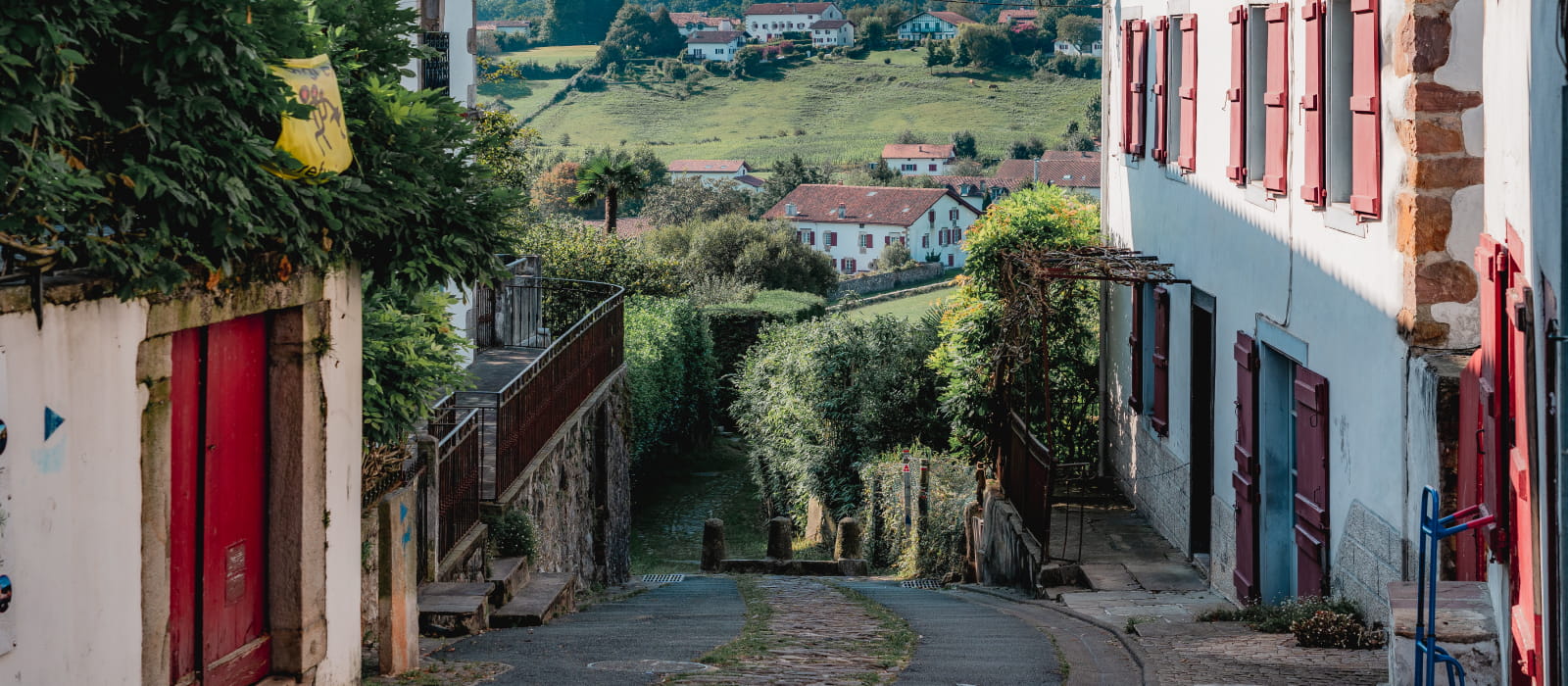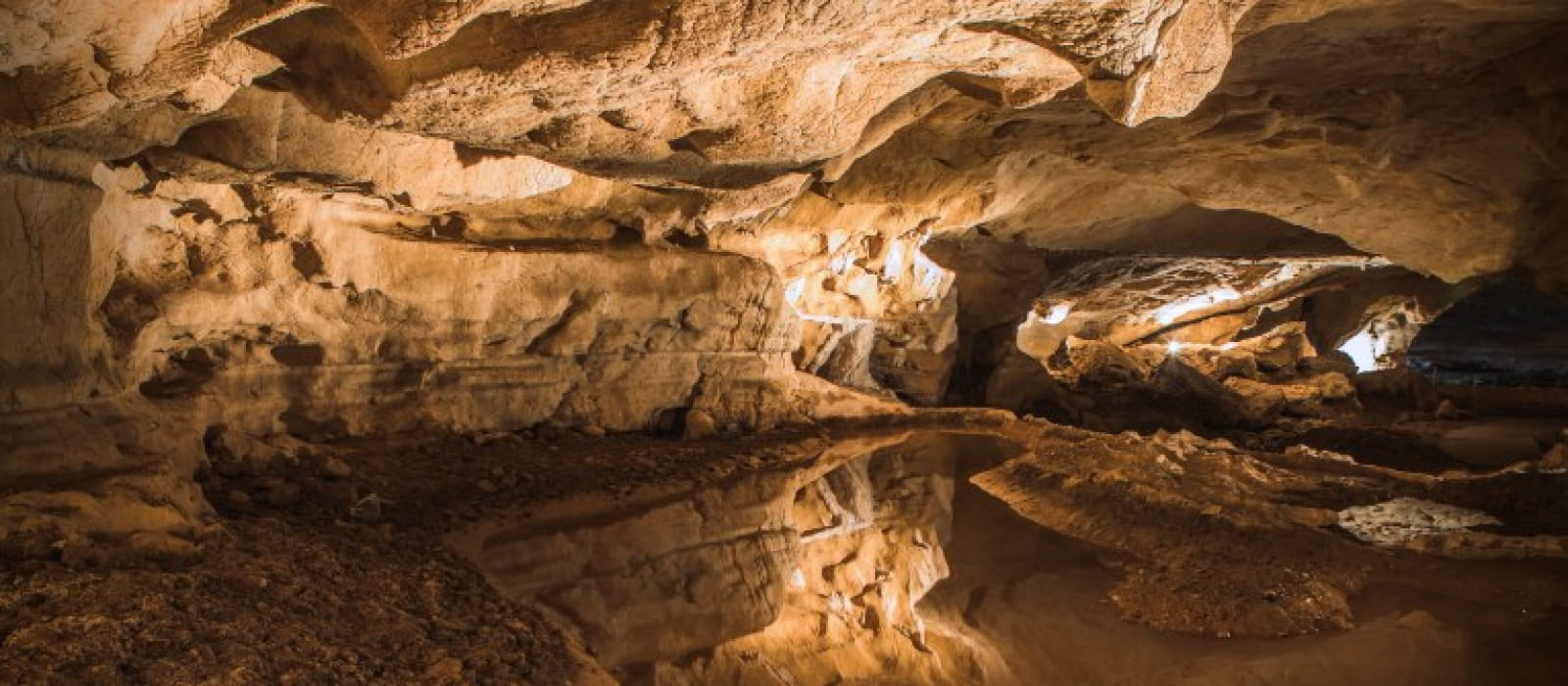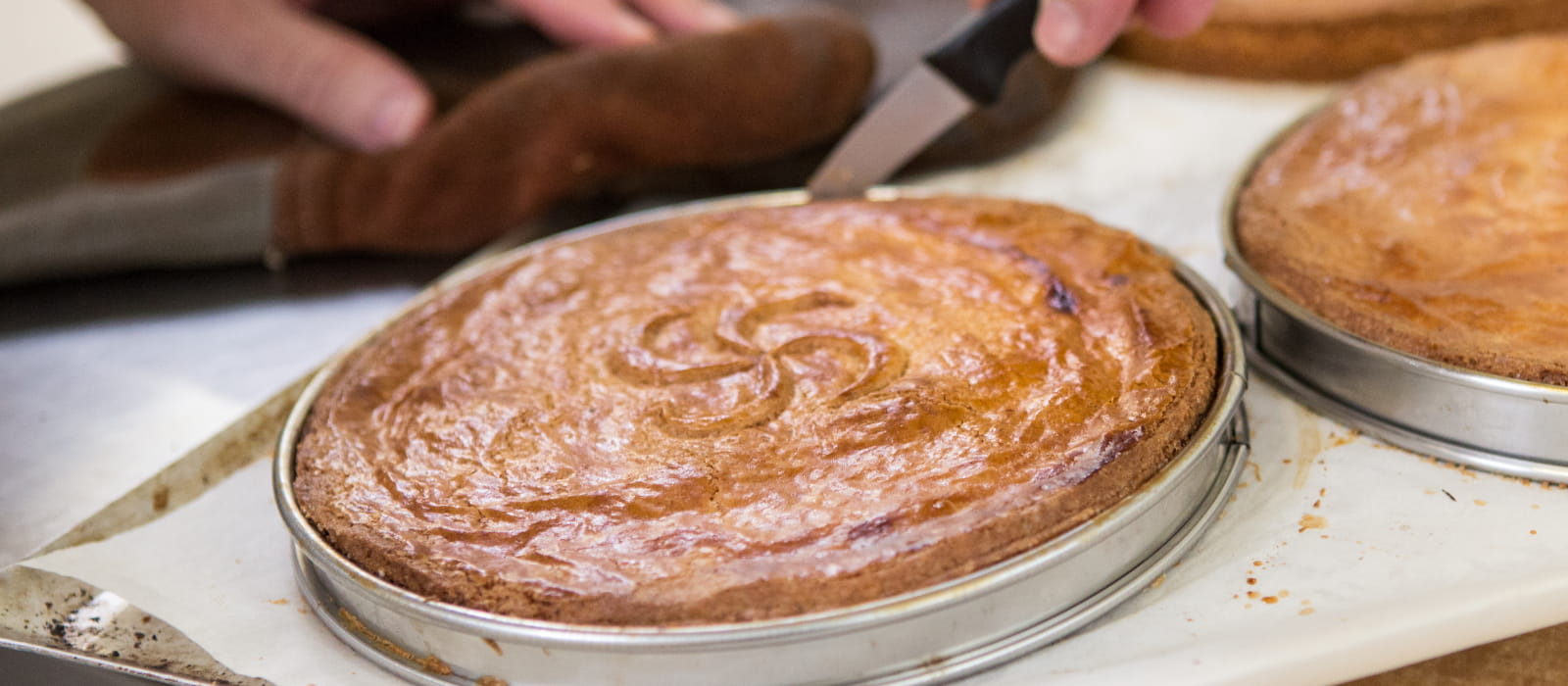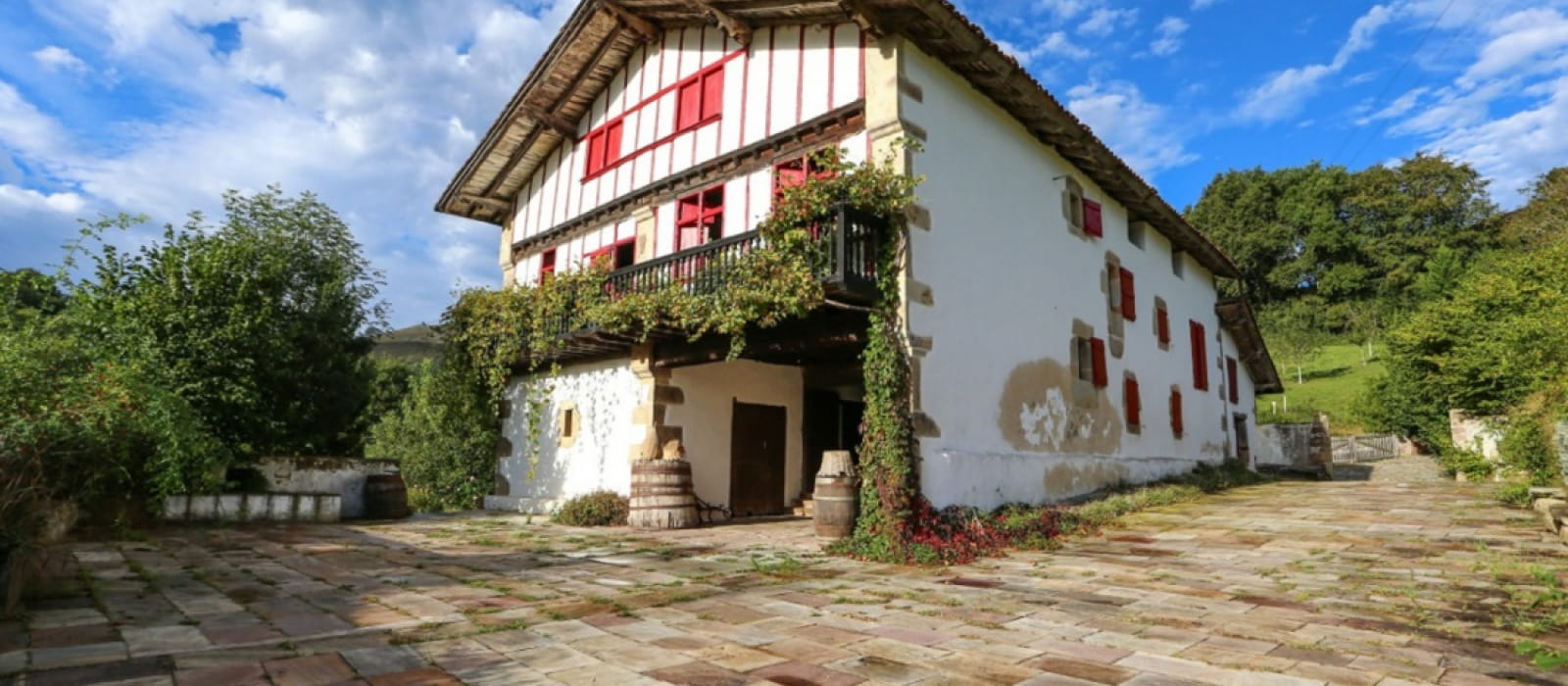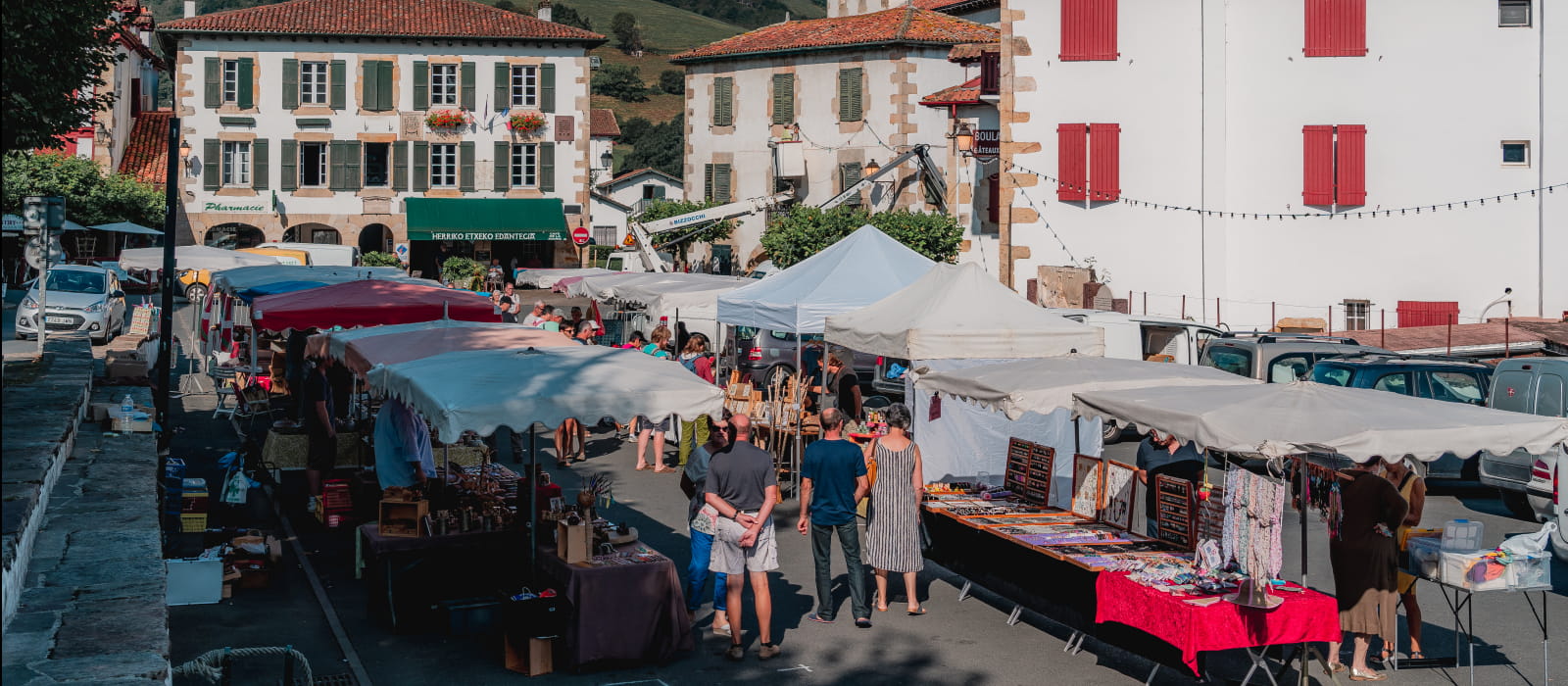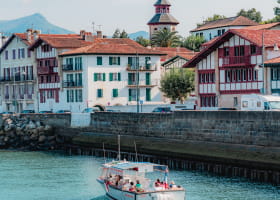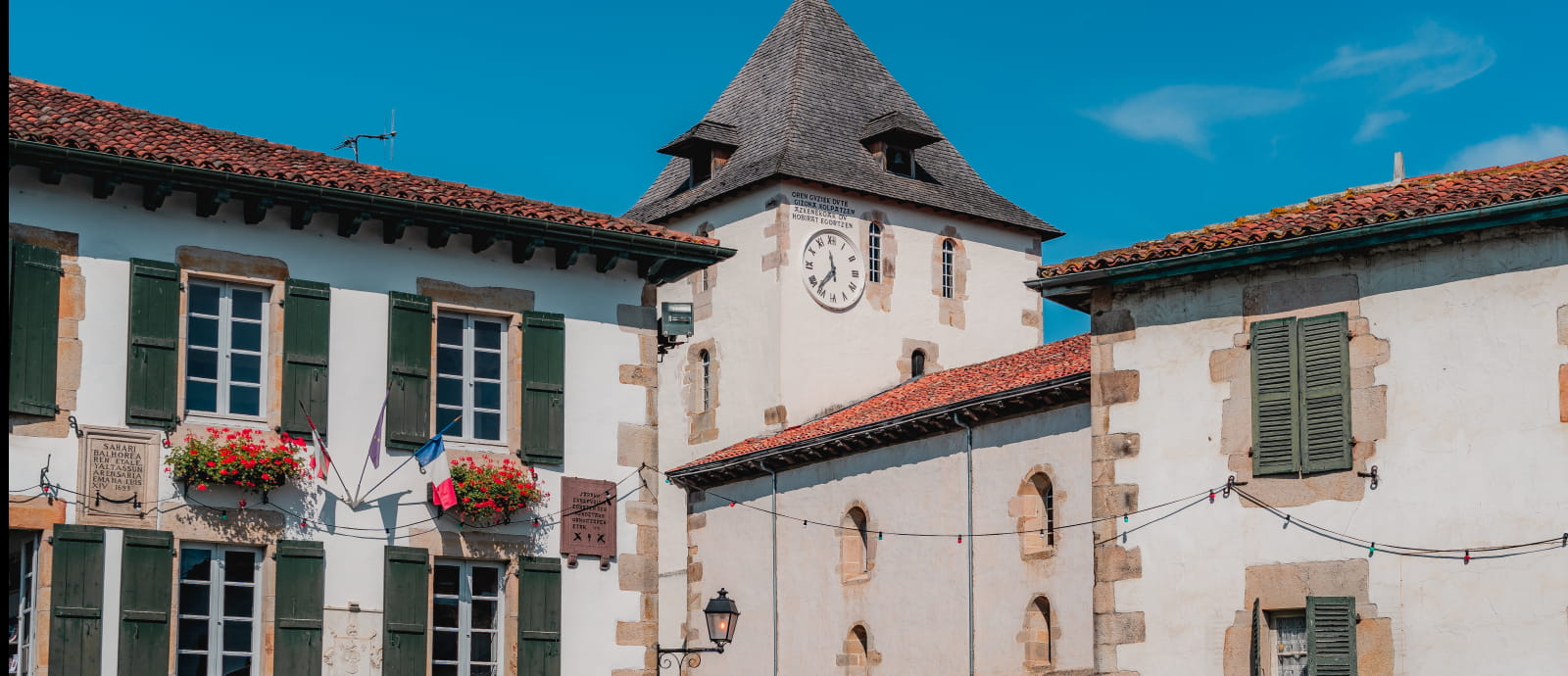
Sare, Most Beautiful Village in France
Sara
Listed as one of “the most beautiful villages in France”, Sare is also one of the most beautiful villages in the Basque Country.
Situated at the foot of La Rhune, Axuria and Ibanteli mountains, this village has a rich history and authentic local ambiance where traditions of the fête, sport and smuggling have spanned the epochs.
In the heart of the village
Sara bihotzean
A village close to the Basque coast

To get to the village of Sare from the Basque coast, you have to go through the little pass of Saint Ignace. From there on, the countryside completely changes. The mountains rise up, the countryside spreads out towards both the interior of the Basque Country and the coast, and beautiful Basque houses appear on the corner of every road or path. When you arrive in the centre of Sare, you will discover the perfect picture-postcard of a Basque village, just as you had imagined.
Sare truly deserves to be listed as one of The Most Beautiful Villages in France.
The fronton : the central square of the village
The fronton, where Basque pelote is played, occupies the central square of the village. It is host to pelote games, a beautiful local farmers’ market and all the activities of the village. All around you find beautiful houses with local shops, the town hall, cafés…
Not to be missed: the txalapartas (traditional Basque musical instrument) to the right of the fronton and especially the reproduction of Picasso’s fresco “Gernika” by the artists of the association Axuri’arte in homage to the bombing of Guernika in 1937.
Strolling around the village you are likely to hear the inhabitants speaking Basque. This is a village where many people still speak Euskara. It is a beautiful place ideal for passing the time.
A timeless village
As you will see you have really arrived in a village where it is important to take your time. Indeed, the village moto is “Saran astia”, which means “In Sare, we have time”.
This concept is even engraved on the sundial of the imposing village church: “Oren guziek dute gizona kolpatzen azkenekoak du hobirat egortzen” that can be translated as “Man is blessed at every hour, but the last one sends him to his grave” to encourage people to make the most of every moment.
One of the 4 frontier villages of the “Xareta” district
Xaretako lurraldea
A smugglers’ village
Sare has 36 Km of border with our Spanish Basque neighbours. For many years Sare developed thanks to “Gauazko lana” or night work. Sare was a prime spot for smuggling.
The Basques crossed the border with alcohol, tobacco, food, animals and more besides. They walked through the passes wearing Espadrilles on their feet to make no sound so as not to alert the customs officers.
The smugglers’ cross country route : a traditional race.

This period of history, now long gone, is celebrated every year with the Smugglers’ cross country race. The 36 runners are invited to participate by the organisers at Sare Town Hall. They ask 18 villages from all over the Basque Country to nominate 2 of their best runners, male or female, to represent their village. It takes only 40 minutes for the fastest runners to cover the 9 Km with an 8 Kg bag on their back.
This event always takes place on the last Sunday in August.
The Blue Pottok walk around Xareta valley

Today, not only is there no longer any smuggling but the villages of Sare and Ainhoa have united with the two border villages of Urdax and Zugarramurdi to create the district of Xareta. Follow the trail marked by blue horses that passes through these 4 villages and you will be able to really appreciate the treasures that each village has to offer.
Urdax is a charming little village with splendid Basque buildings and old farmhouses. The monastery and old mill in the village centre are well worth a detour. Zugarramurdi is a well-known Basque Country village, and is more particularly known as being the village of witches. A visit to the witches’ cave will enable you to separate the myth from the reality and discover what really happened.
The tradition of hunting migratory wood pigeons
Uso ihizia
Also called net-hunting

It is impossible to know exactly how long this tradition has been going on in Sare but it is certain that it dates back a very long time.
At the top of the Col d’Etxalar, the Basques hunt pigeons in the traditional, yet original way called “chasse à la pantière”, a complicated method of hunting using a net that is stretched out to capture the pigeons as they fly through the mountain pass. Men climb the tallest trees and then throw wooden discs from above in order to make the birds lower their flight path towards the nets.
This custom starts every year at Michaelmas on 29th September and finishes at Saint Martin’s feast day on 11th November.
Long live the pigeon festival
Every year, an entire week of festivities is devoted to this activity with discovery visits, cultural events and above all the opportunity of tasting the pigeons at various restaurants in and around Sare. A rare treat!
When the hunting season is closed, you can go on a tour of the pigeon hunting huts, or blinds, on a hike to see Sare’s pigeon hunting blinds and countryside.




